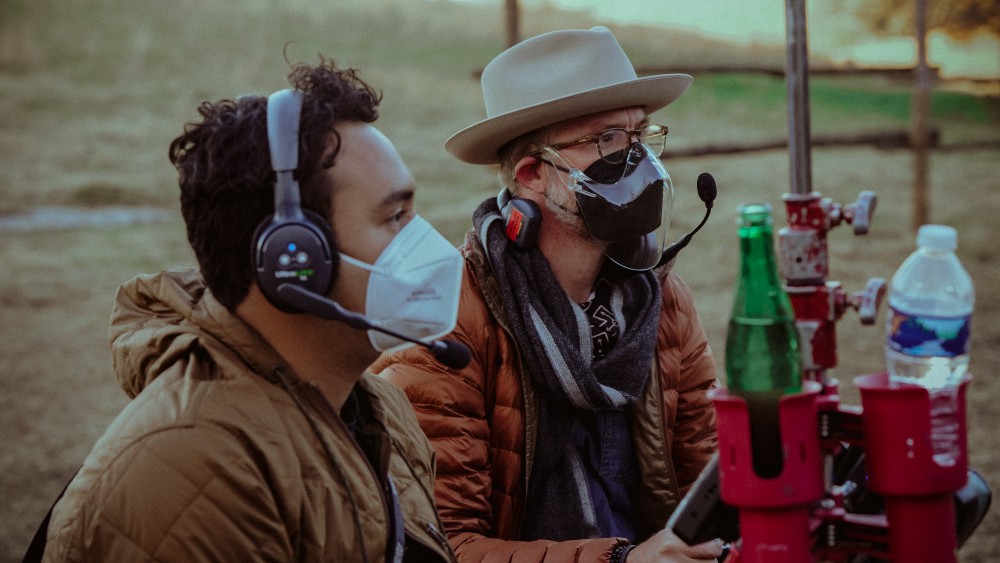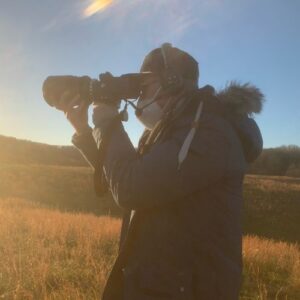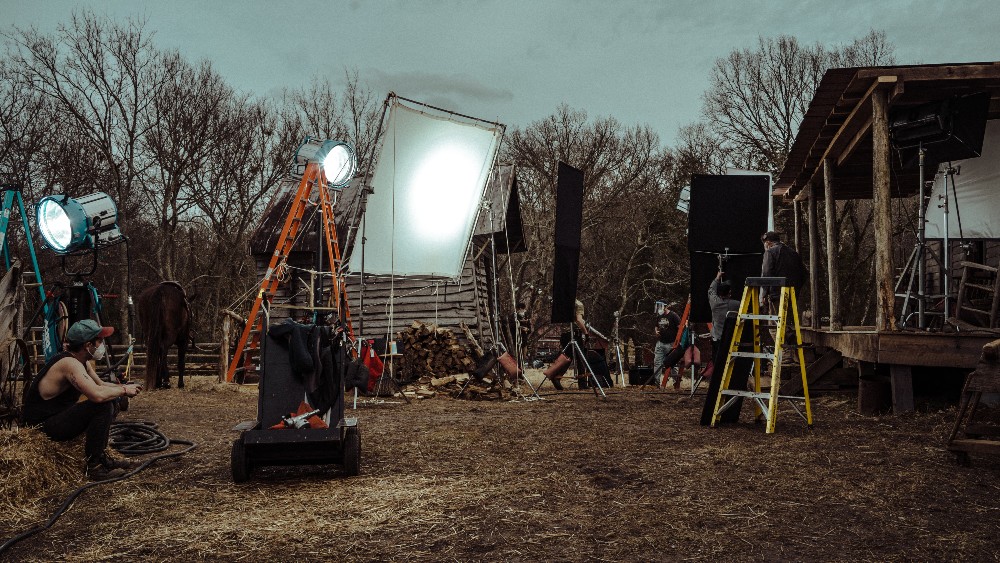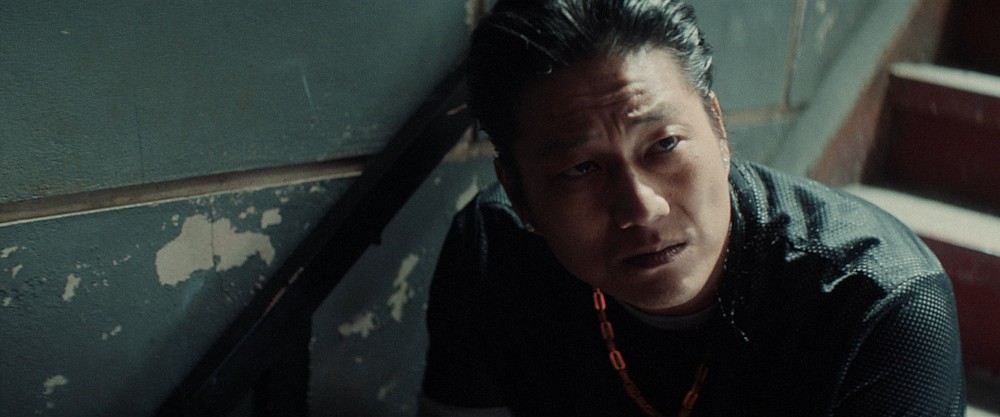
“It’s a miracle I’ve made it this far,” reflects Tim Blake Nelson’s titular character in the evocative indie Western, Old Henry, currently wracking up critical praise during its multi-platform release.
In Henry’s case, the reflection comes after his son makes a startling realization about his widower dad’s earlier life, and Nelson’s comments are about the ultimate inescapability of one’s past. And while such a reflection makes sense for Henry, it shouldn’t be the way crew people feel on a set, especially with indie films where procedures may be more lax.
To be clear, this wasn’t the case for Old Henry, where DP John Matysiak’s mist-and-earth-toned cinematography helps add to the film’s resonance.
For him, the killing-by-negligence of cinematographer Halyna Hutchins strikes even harder, as they shared several social connections off-set, as well. But in talking with him about the making of his film, we also asked his thoughts about this particular workplace atrocity, and thus begin an informal, recurring aspect of this column, which will have film crew weigh in — on or off record, as they see fit — about their own experiences with workplace safety, and the degree to which circumstances are likely to change with ratification of a new agreement. Also, whether such an agreement will signal larger cultural trends that will affect non-union productions as well.

Though, for such trends to have lasting impact, they can’t be restricted to film production.
Recently, a Teamster of 20-years standing took to Medium to give a behind-the-scenes perspective on America’s current shipping and distribution bottlenecks, saying it mostly comes down to exhaustion and understaffing at various critical points — such as in ports (while operators can charge premium rates in times of duress and shortage, and thus have little incentive to change).
The writer notes that “what we have is a system with a limited amount of trucks and qualified drivers, many of whom are already working 14 hours a day (legally, the maximum they can), and now the supposed fix is to have them work 24 hours a day, every day, and not stop until the backlog is cleared. It’s not going to happen. It is not physically possible.”
Something, of course, already known for a long time by film crews, who often worked at least 14-hour days, when in production. And even the current proposed settlement, with its 10 hour “rest” periods, still allows for a series of 12-hour days. Another example of how Hollywood is not quite as rarefied as it likes to believe. Which, according to Matysiek, is precisely part of the problem:
“I feel there’s a systemic problem in the culture of independent films that takes advantage of people — I think that’s what this underlines as well,” he says. “Banning blanks is one step — but it’s not a catch-all. ‘If I do this film, it’s going to change my career’ — that’s a Hollywood idea. And you make that film at all costs, because it’s such a tough industry to break into.
“Unfortunately you have producers that prey upon that. It underlies the systemic problem of long form film production. It all comes back to work conditions, and negligence…It’s like a half-construction site at times — we get caught up in it on set, (though) it reminds us why we wanted to make movies in the first place; we wanted to create something with friends.”

Reacting to Deadline’s recent piece about cinematography, specifically, being the most dangerous department — often due to the crashing of planes or helicopters, or stunt vehicles going out of control — Matysiak says “I’ve always been aware of that statistic — how the cinematographer and camera operator are the most dangerous positions on set,” allowing that it’s usually because of “the places we find ourselves in — whether it’s in a helicopter,” or anything else that’s moving, or aloft at the time.
“The industry is so different now than it was 5-10 years ago; there’s a lot of content being made,” he adds, which in turn “highlights the inexperience” of people getting into senior crew positions faster, particularly on non-union shoots, to help satisfy that growing maw for “content.”
“I’ve been a part of student films, independent films,” he recounts, that were “wildly unsafe, I would never do those things now.”
And with Old Henry, he didn’t have to. “We all had kind of worked together before (and) felt very supported by the producers. “ This would be in contrast to current reports about Rust, where producers evidently had t-shirts made mocking the requests of the camera crew for better on-set safety, starting with accommodations closer to the set.
Even though it was a non-IATSE production, Old Henry’s sense of community translated to strict procedures with guns — particularly important in a six gun-driven genre like Westerns. “The protocol that we had [was that] the armorer would look at it, the A.D. would look at it, and offer it up to anyone on the crew to look at it. [Then] the director would, I would, and my camera operator would.” And, Matysiak added, his operator, Samuel Willey, was “ex-military,” to boot.
All of this culminating when “the actor would look at it as well.”

Indie Cinematographer Ray Huang, whose work can currently be seen in the moody, NY Chinatown-set immigration crime drama Snakehead, echoes some of Matysiak’s sentiments, at least about the benefits of a “safe and sane” on-set atmosphere:
“I think I’ve been fortunate to work with producers and filmmakers that have taken safety seriously over the course of my career. Having said that, the camera department is always right in the center of the set and the action. Things often get quite adventurous, but the wellbeing and safety of my crew is paramount. I try to lead by example, if the going gets rough, but ultimately no one’s health or life is worth risking.”
Except of course we’re in an age where, one way or another, we’re all at risk. The events on the Rust set just confirm it, as do the attempts of the somewhat revenant American labor movement, in and outside Hollywood, to push back against the long-standing view of “employee dispensability.”
Whether there is enough critical mass to fundamentally change things in a meaningful time frame remains to be seen.
Perhaps, in some ways, it’s a miracle all of us have made it this far.
 Mark London Williams is a BTL alum who currently covers Hollywood, its contents and discontents, in his recurring “Across the Pond” dispatch for British Cinematographer magazine, contributes to other showbiz and production-minded sites, and musters out the occasional zombie, pandemic-themed, or demon-tinged book and script, causing an increased blurring in terms of what still feels like “fiction.”
Mark London Williams is a BTL alum who currently covers Hollywood, its contents and discontents, in his recurring “Across the Pond” dispatch for British Cinematographer magazine, contributes to other showbiz and production-minded sites, and musters out the occasional zombie, pandemic-themed, or demon-tinged book and script, causing an increased blurring in terms of what still feels like “fiction.”
Mark London Williams’ Strike Alert column will appear every Tuesday. You can reach him to give him tips and feedback at [email protected]. He can also be found on Twitter @TricksterInk
Old Henry and John Matysiak photos courtesy of Shout! Factory.





